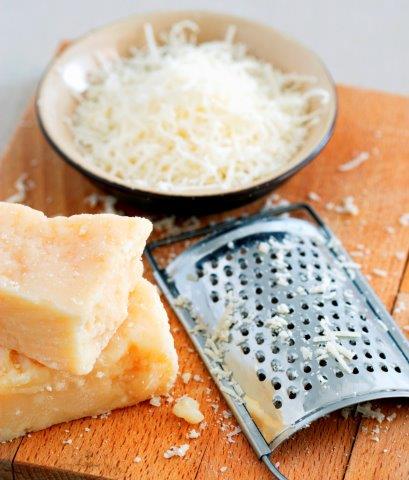FOR IMMEDIATE RELEASE
ACS News Service Weekly PressPac: March 03, 2016
What gives parmesan cheese its unique taste?
"Quantitation of Key Tastants and Re-engineering the Taste of Parmesan Cheese"
Journal of Agricultural and Food Chemistry
When it comes to pasta and pizza dishes, nothing beats a sprinkle of grated parmesan on top. But the flavor quality of the popular cheese can be inconsistent. Now scientists are using “molecular food engineering” to help ensure its good taste. In a report in ACS’ Journal of Agricultural and Food Chemistry, they identify key components that contribute to the cheese’s signature flavor.
In recent years, the food and beverage industry has increasingly been turning to science to analyze products and come up with systematic ways to improve them. Some of these studies have been geared toward identifying components in cheeses that give them their savory blend of salty and bitter notes. But no one had thoroughly investigated parmesan’s particular suite of tasty compounds. Hedda Hillmann and Thomas Hofmann from the Technical University of Munich, Germany, took on the challenge.
The researchers extracted the active, key taste compounds from samples of parmesan and identified 31 that were critical to the cheese’s savory and bitter flavors. Several peptides were identified for the first time in parmesan and were found at high concentrations. The researchers say knowing this taste profile could help manufacturers tweak their processes to produce a better tasting cheese.


